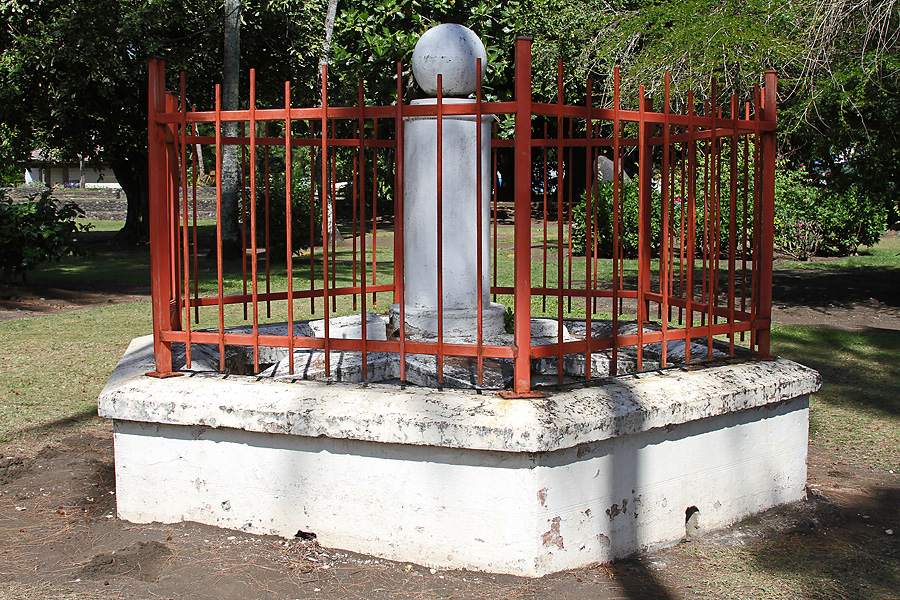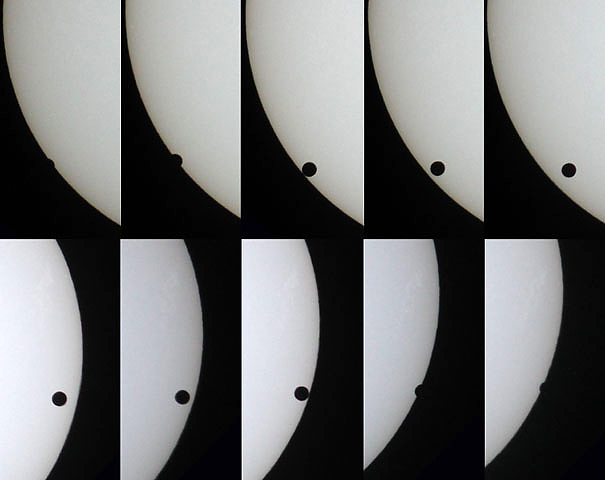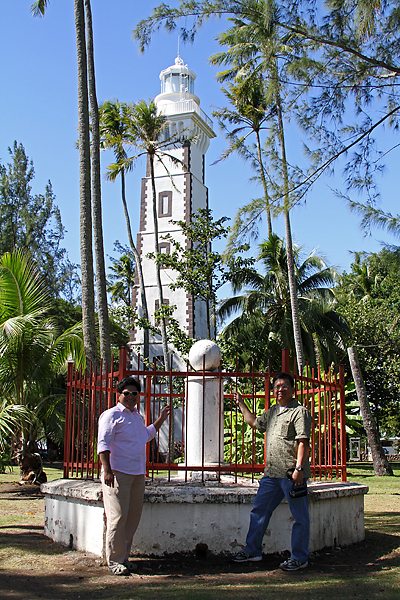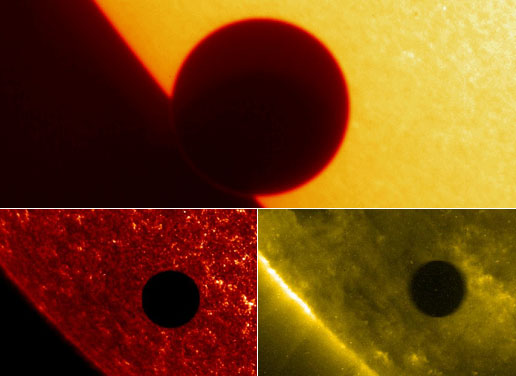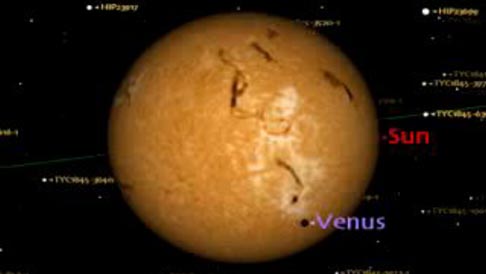Photos: Astrophotographers Track 2004 Transit of Venus
Venus Point in Tahiti
After successfully observing the July 11, 2010, total eclipse of the Sun from the Tatakoto Atoll in French Polynesia’s Tuamotu Archipelago, Joson and Aguirre decided to visit the historic Venus Point on Tahiti’s northernmost coast. This was the site where Captain James Cook observed the transit of Venus in 1769. A white concrete monument enclosed in a red fence now marks the spot, which is just a short distance from the Venus Point lighthouse constructed in 1867. Unfortunately, someone stole the plaque on the transit monument in the late 70s or early 80s; perhaps it will be replaced in time for the transit this June.
Transit Ingress and Egress
These series of images, assembled by Aguirre and Joson from their white-light photos in 2004, document the entry, or ingress, of Venus's disk across the Sun (top row) as well as the planet's exit, or egress (bottom row). Aguirre and Joson tried to capture the so-called "black-drop" effect at second and third contacts. In this curious phenomenon, as Venus's silhouette makes internal contact with the limb, it appears to draw a thread of blackness that distorts the silhouette's shape. It's an elusive effect that was first reported by astronomers during the 1761 transit and had thwarted early attempts to measure the times of contacts accurately. Like many observers in their tour groups, Aguirre and Joson didn't see or record the black-drop effect in 2004.
The Transit of Venus Returns to Tahiti
While Joson and Aguirre stood next to the monument, they tried to imagine the hardship and ordeal that Capt. Cook had to endure while sailing from England to Tahiti, and what Tahiti must have looked like in 1769. After 243 years, the transit of Venus will again touch the shores of Venus Point. On June 6, 2012, the planet’s ingress across the solar disk can be viewed shortly after local noon but unfortunately, its egress will not be visible. The Sun would have set that day with the transit still in progress.
2004 Venus Transit of Sun
Three views of Venus' solar transit in 2004, taken by NASA's sun-observing TRACE spacecraft. The top image is in visible light; the view on bottom left is in the ultraviolet, and the one on bottom right is in the extreme ultraviolet.
Venus Transit
Venus transit sky map. [See our Transit of Venus 2012: Complete Coverage Special Report.]
Breaking space news, the latest updates on rocket launches, skywatching events and more!
Edwin Aguirre is a veteran eclipse chaser, astrophotographer and world traveler. With his wife, Imelda Joson, he has organized, led and/or participated in 11 solar eclipse expeditions in North America, Asia and Africa. He now works as a Senior Science & Technology Writer and Editor for the Office of University Relations at the University of Massachusetts Lowell.
